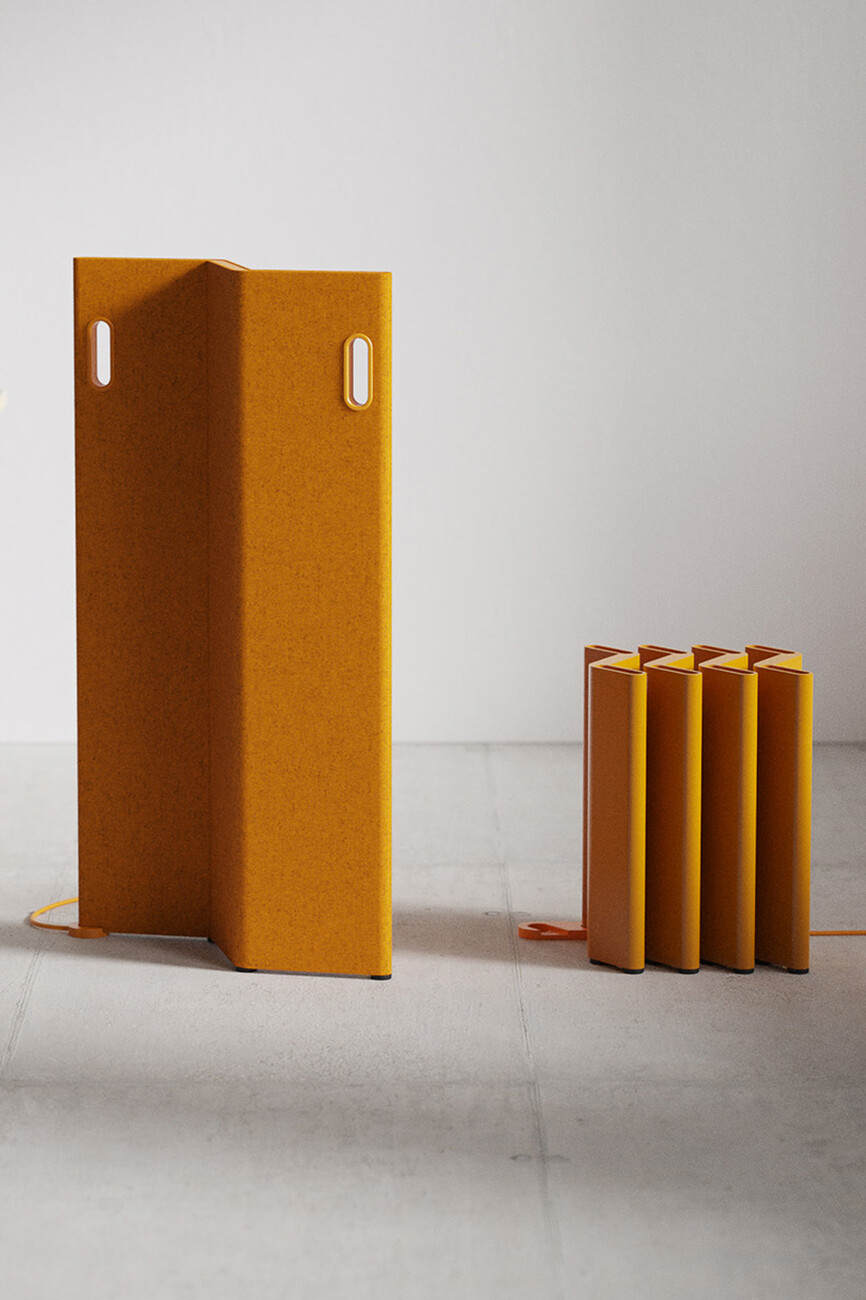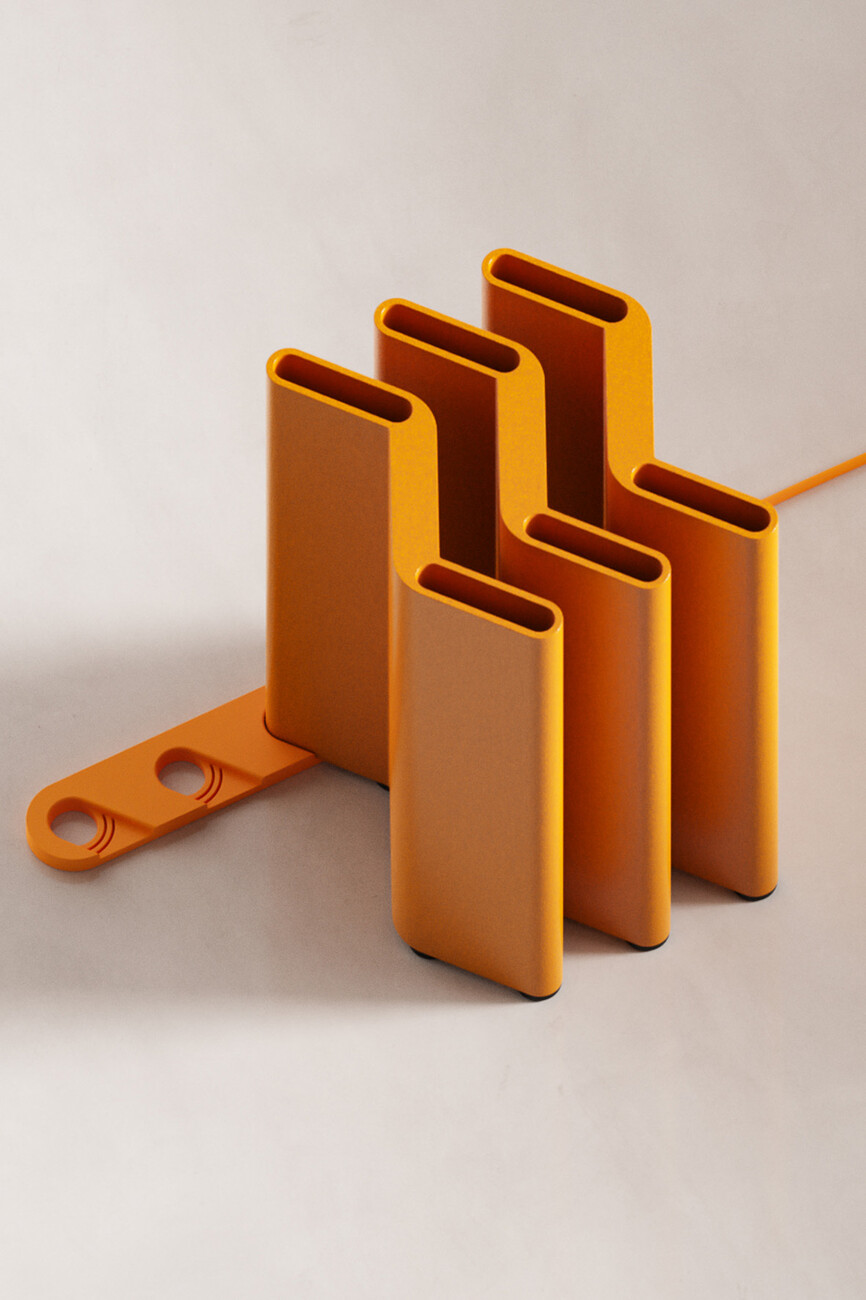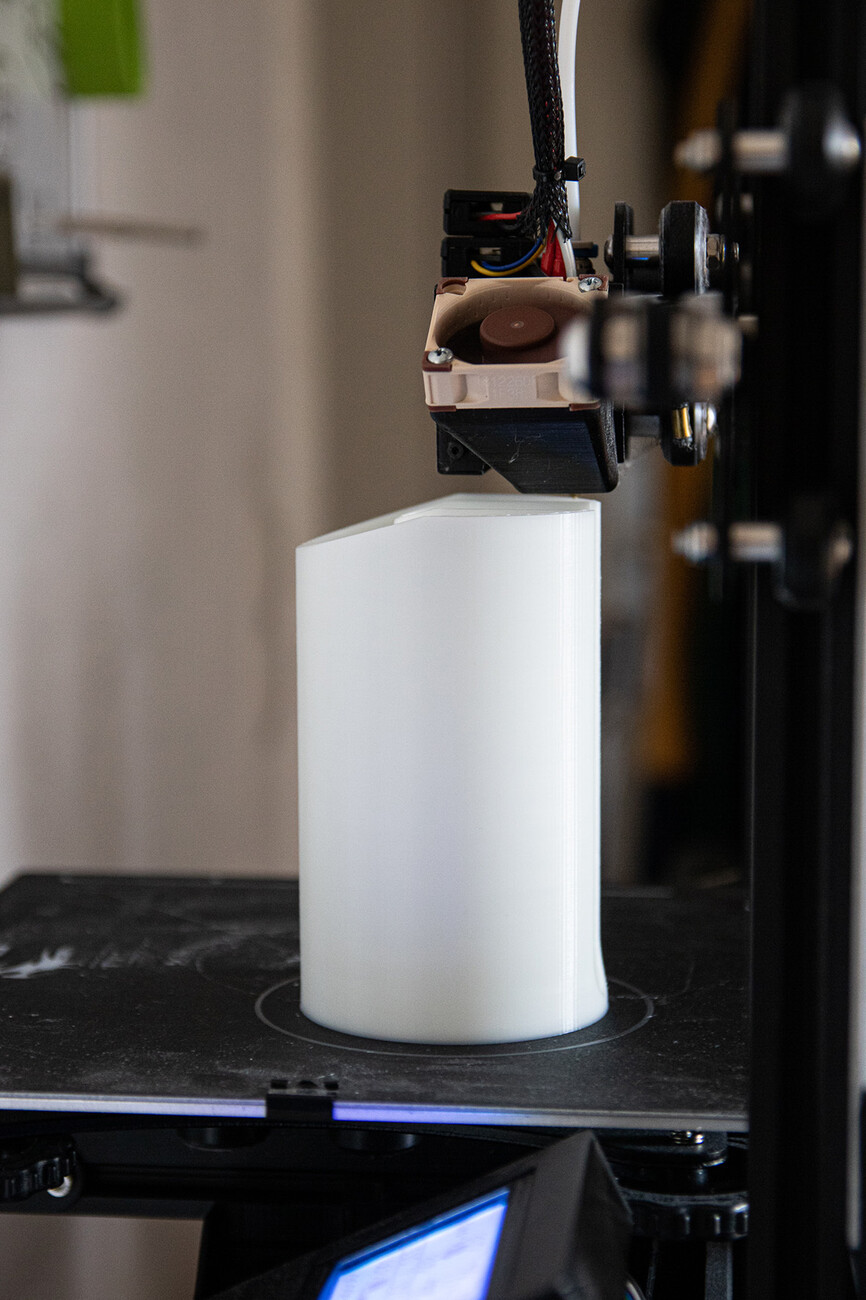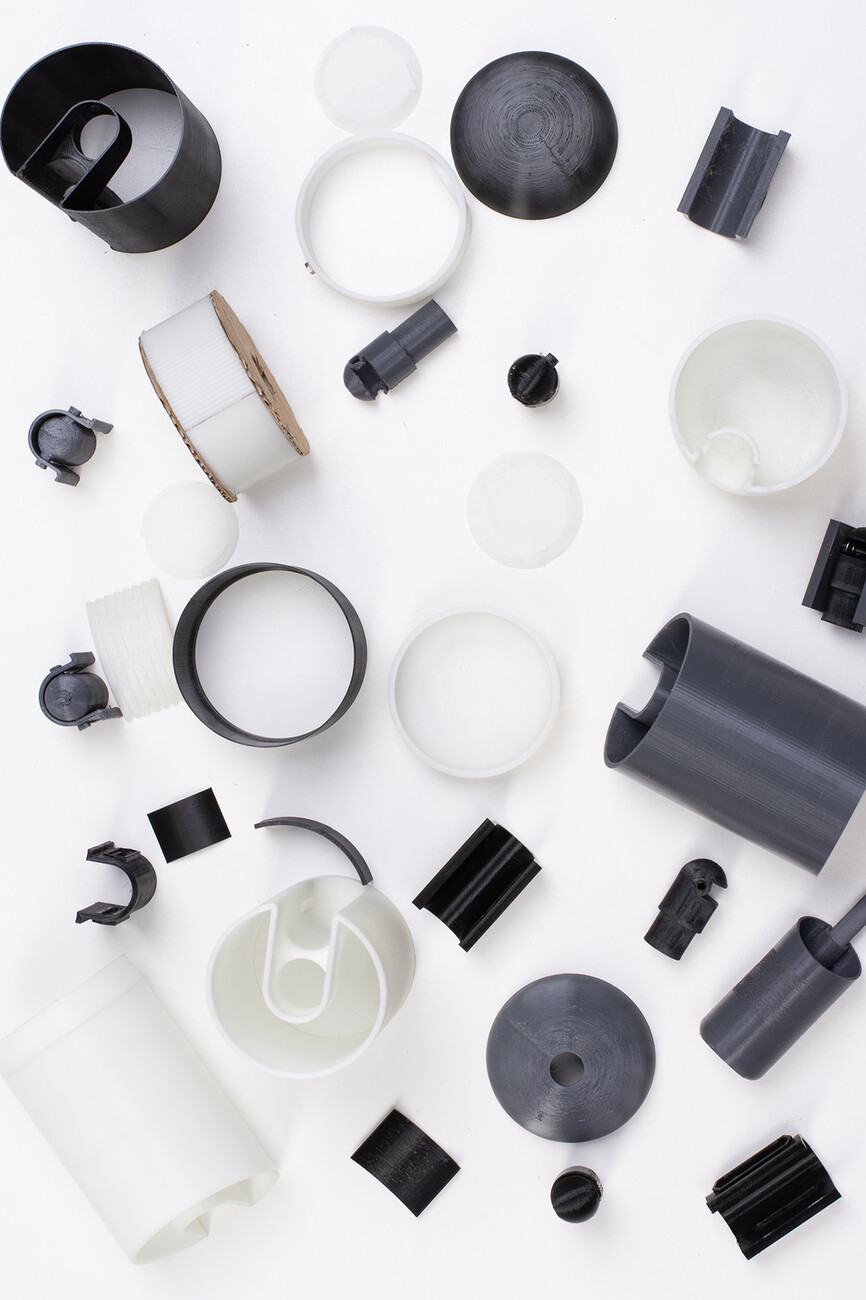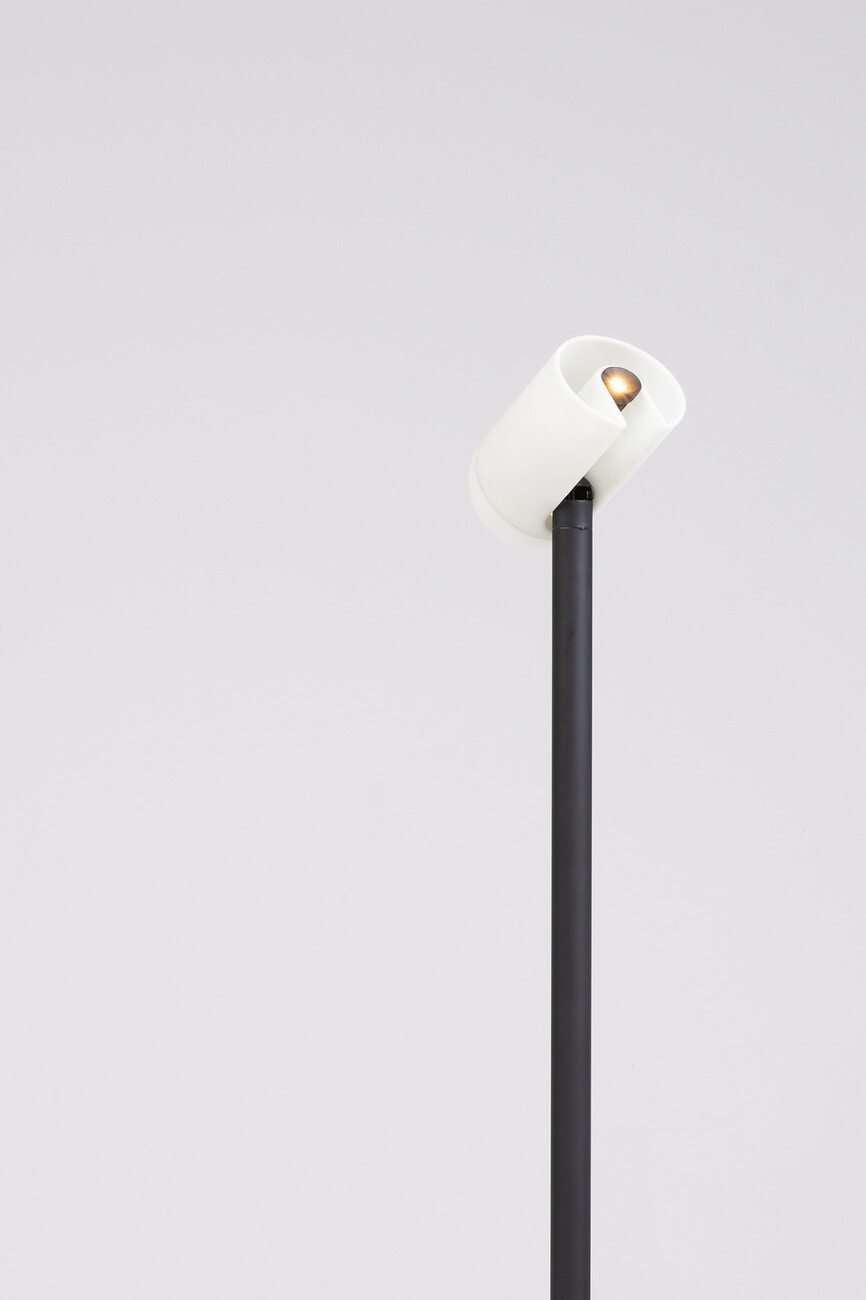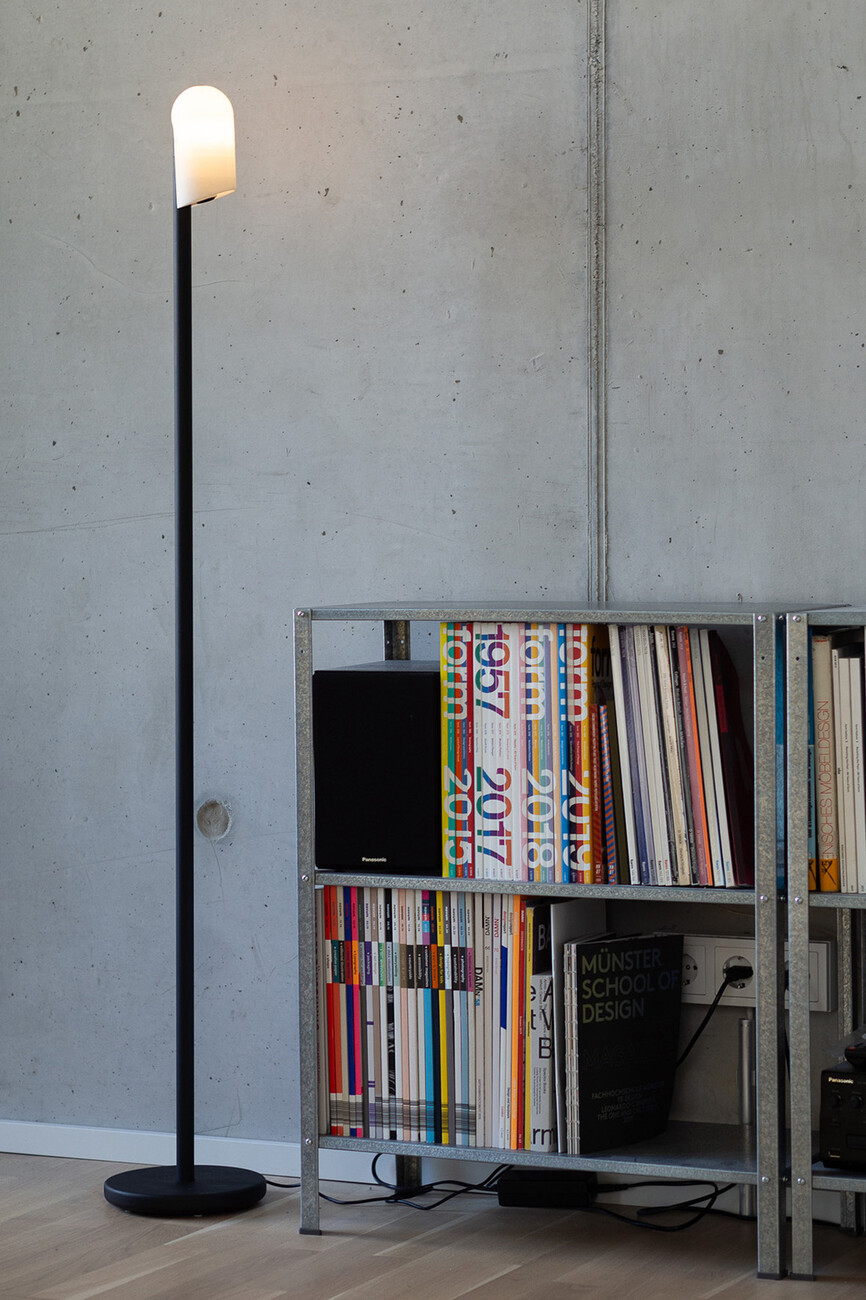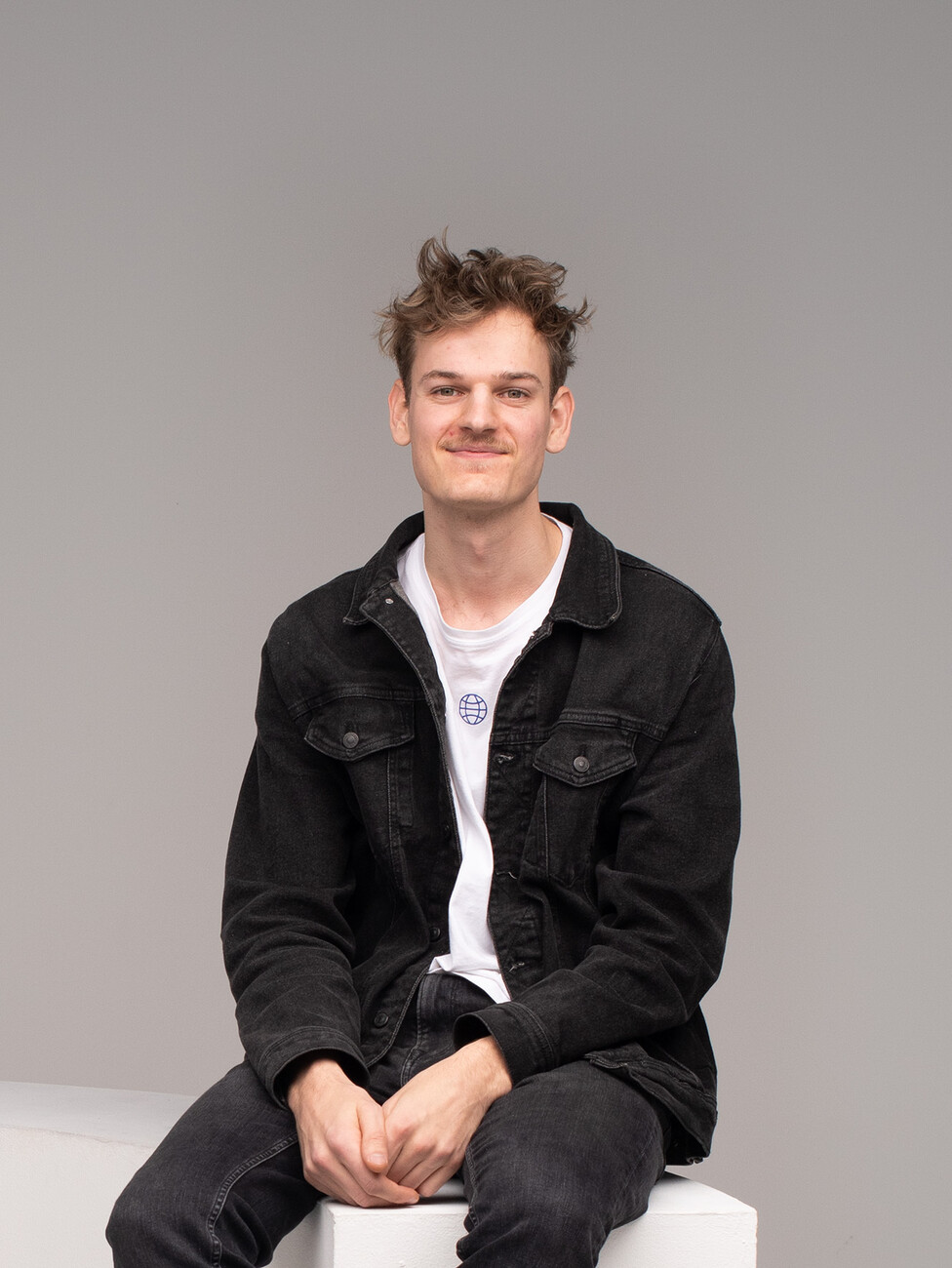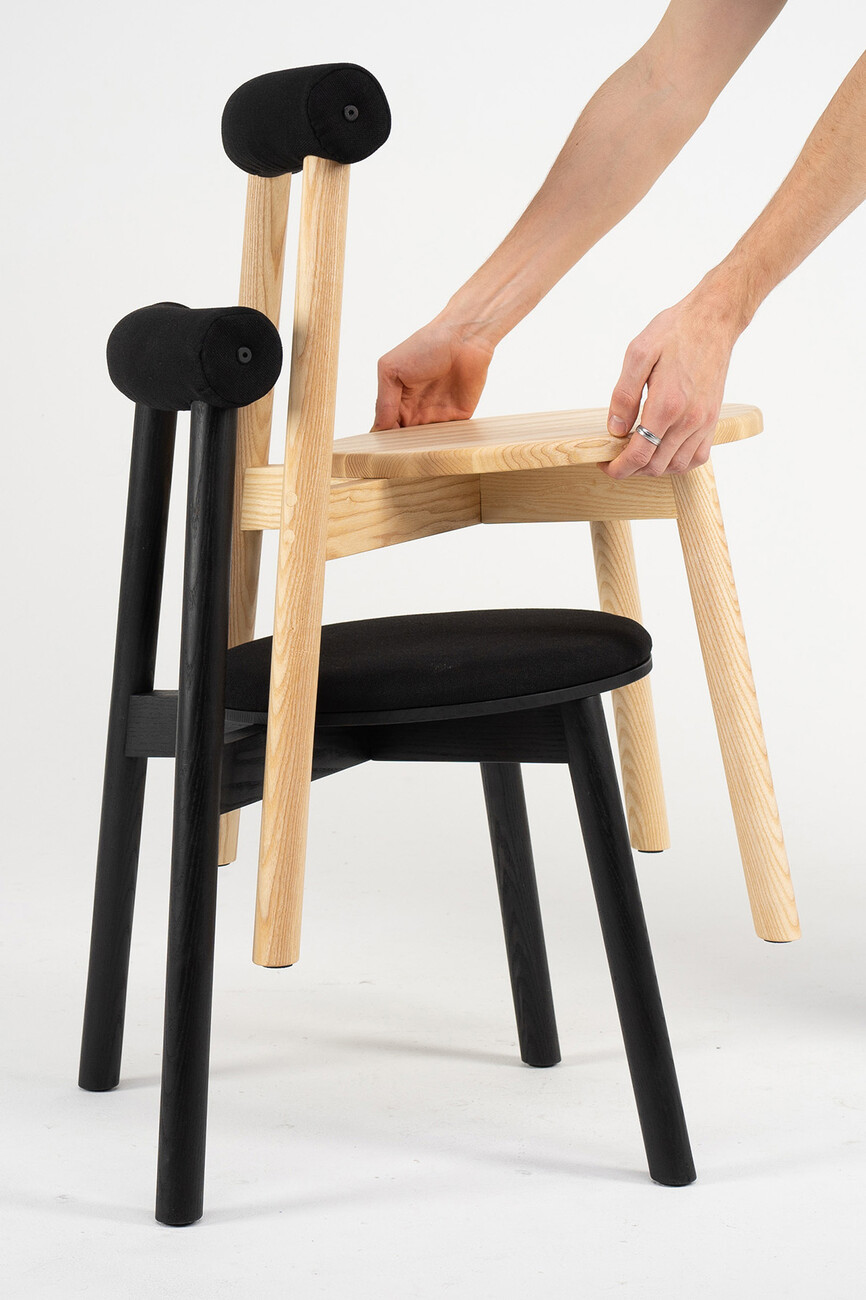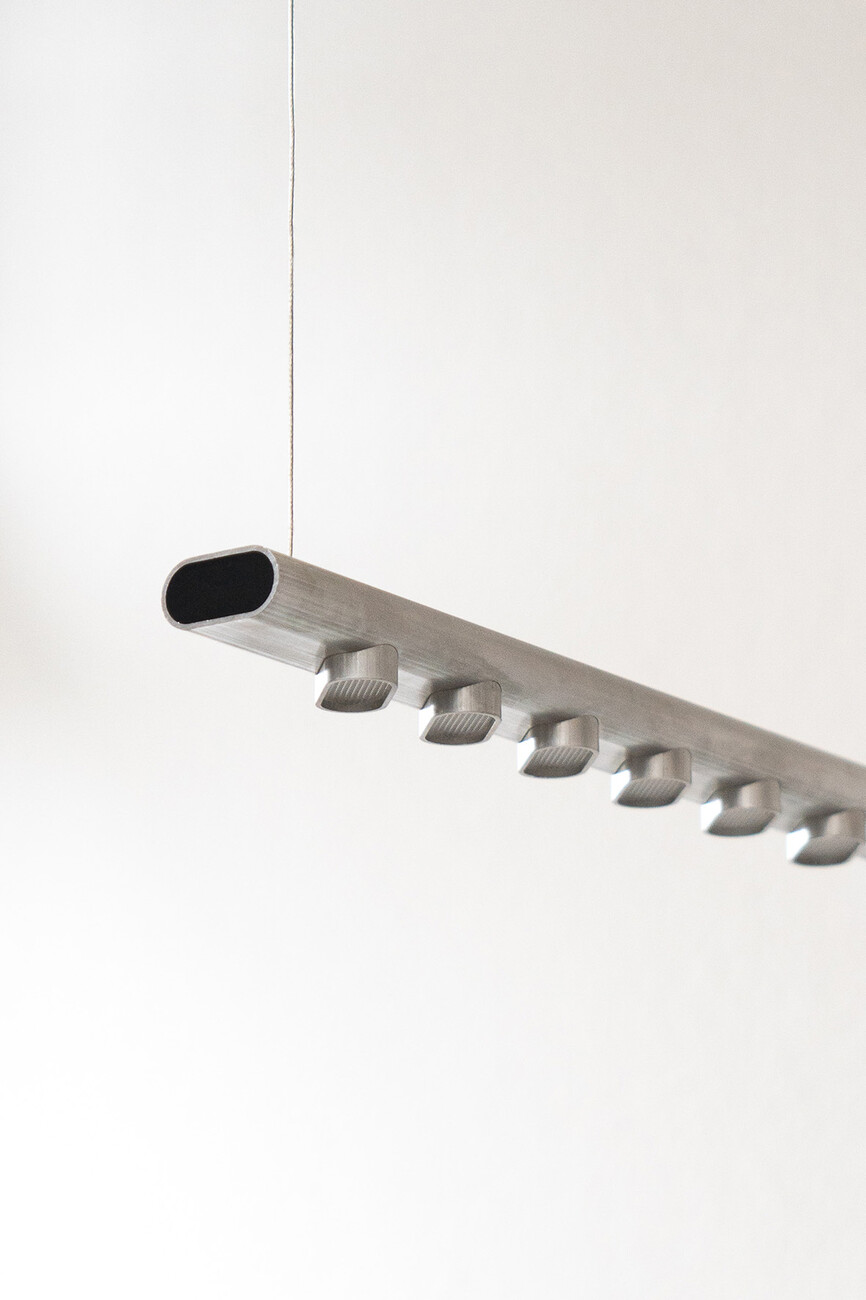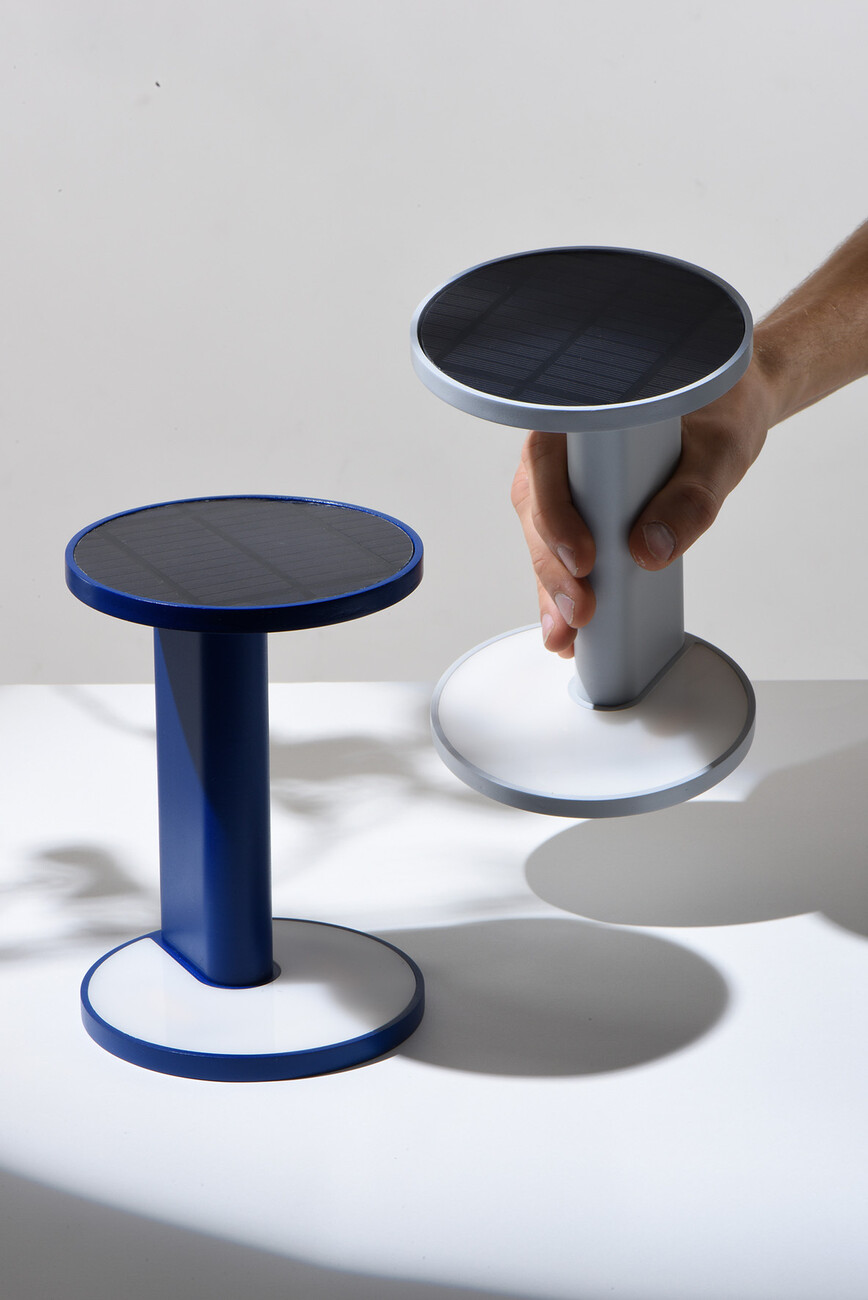YOUNG TALENTS
New typologies
Anna Moldenhauer: You studied product design in Münster and Berlin, how did the two programmes differ in terms of content?
Moritz Walter: I would say that the interdisciplinary degree programme at Münster University of Applied Sciences was a very good foundation for the job, as we were taught many of the hard skills. In other words, the teaching was very practical, from production to marketing. After the foundation course, this basis is split into specialisations such as media, communication or product design, but the interfaces remain, and therefore also the enriching insights between all subject areas. At the Weißensee Kunsthochschule Berlin, I was able to gain a different perspective on design. I mainly studied with product designer Carola Zwick and also learnt about interaction design and working with electronic products. It was definitely very valuable to change universities again in order to experience different approaches.
Is there a way of working that you took with you from your time at Mark Braun?
Moritz Walter: We usually worked directly on a prototype in order to get a feel for the product as early as possible. Ideas were therefore put directly into a mould and then refined. I prefer this process as you don't overlook any details, which can quickly happen with a digital version. Mark is a trained carpenter, so we had an extensive workshop at our disposal, which was a great advantage.
You recently introduced ‘Hotspot’, an electricity-based heating system. How does this differ from other electricity-based models?
Moritz Walter: In the project, I focussed on three problems associated with heating indoor spaces: most heating systems are accompanied by a very expensive and complex infrastructure. In addition, fossil fuels, which are still used in most heating systems, do not offer any prospects. Permanently installed systems heat entire rooms instead of providing individualised heat. Electricity is one of the few energy sources that can be generated sustainably and is therefore also sustainable. I want to think about heating in a more targeted and efficient way, more focussed on people's needs. This gave rise to the ‘Hotspot’ product family, with a panel for larger-area applications and mobile heat storage units for transferring heat close to the body. In my research, I looked around the market for decentralised heating solutions and found that they are primarily products that inadequately and inefficiently imitate permanently installed systems. Electricity as a flexible form of energy that is not tied to the building's pipework actually offers many advantages, as the heat can be brought directly to people where it is needed. This flexibility allows plenty of scope for designing new typologies. In this respect, the design should also resemble that of a piece of furniture rather than having a technical appearance. It should be an enriching part of the living environment in every respect.
Are you already in talks with companies for market readiness?
Moritz Walter: So far, I have only been contacted by retailers who wanted to buy the product in order to sell it themselves. I am currently still looking for a company with which I can bring the collection to market maturity.
You also developed the ‘Nomad’ solar table lamp and the ‘Modi’ floor lamp – what were the challenges in each case?
Moritz Walter: I designed ‘Nomad’ together with my fellow student Michelle Müller – the luminaire was the result of a course on solar energy at the university. We wanted to design a self-sufficient luminaire in which the solar cell is part of the interaction concept. This means that you have to turn the light upside down to switch it off and charge the solar cell. This gesture is intended to help people understand the solar cell as an essential part of the luminaire and make the feeling of solar energy a little more tangible. To this end, we have also integrated a small LED strip into the bar, which indicates where the optimum charging situation is in the room depending on the position in the room. ‘Modi’ was primarily inspired by modern living situations with limited space. The luminaire offers two lighting scenarios: a direct beam of light to function as a classic reading light and a diffuse mood light for communal situations.
You are currently working at ‘GRAU’ – would you like to develop primarily luminaire design for your freelance projects in the future?
Moritz Walter: I'm definitely very interested in the subject of light. Alongside furniture design, it's the area that I'm currently working on a lot. I find it exciting how strongly the atmosphere in a room is influenced by the lighting and how much personality luminaires take on through their design and light colour. However, I don't want to commit myself to this, as there are many other exciting product areas.
In the pandemic, you also developed the ‘Turn’ chair as your final thesis, which offers many seating positions, fits into homely contexts and does not require complex components. Would the chair already be ready for the market?
Moritz Walter: I would definitely be willing to start a small series on my own or with a partner. Since the development, I have been using the chair at home and have been able to test the prototype extensively.
Your design is both solution-orientated and shows aesthetic value. Can you describe your design philosophy?
Moritz Walter: You have already summarised well what I want to express – I always try to achieve clarity in the design, even if the topics are more complex. For example, I want to answer the question of how we want to heat in the future with comprehensible solutions. Especially when objects are to be used in a living and working context, it is all the more important that they are approachable in their design.
What is the current situation for young designers in Berlin?
Moritz Walter: Rents are incredibly high and jobs are not easy to find. Nevertheless, I believe that the city offers great potential for developing your own ideas. You have to be proactive yourself, as many companies don't proactively approach designers or know what the benefits of working together would be. Personal initiative is an important point. In addition, cities like Berlin offer many opportunities to network with like-minded people, which also generates ideas and projects. For example, I founded a collaborative workspace in Berlin with two friends, including a workshop. It's a great place to network and create jobs.
What are you currently working on?
Moritz Walter: As well as expanding the workspace, I'm working on two new designs that I want to develop into a small series.

